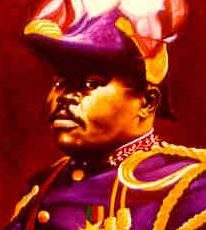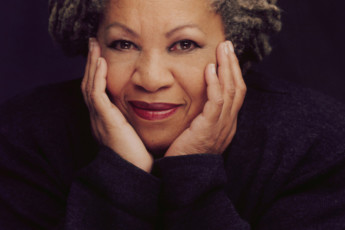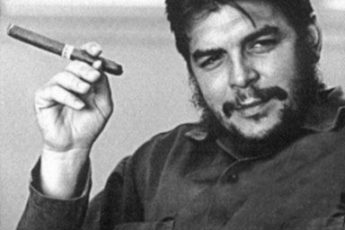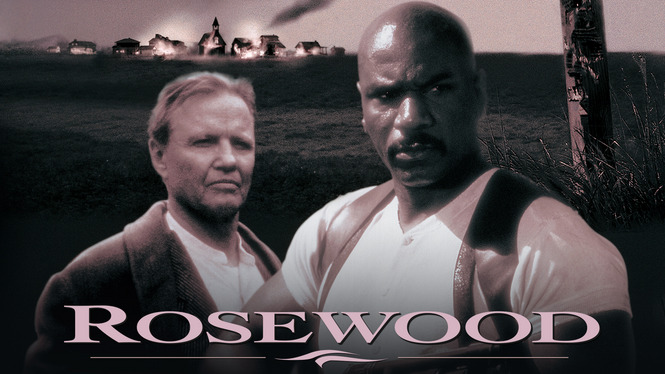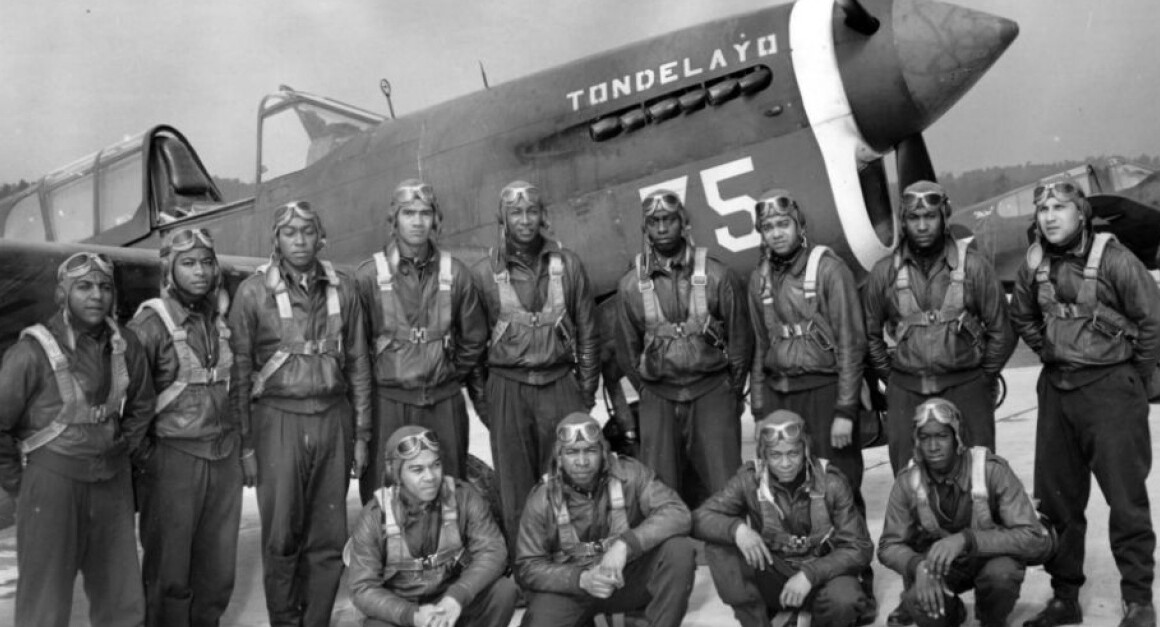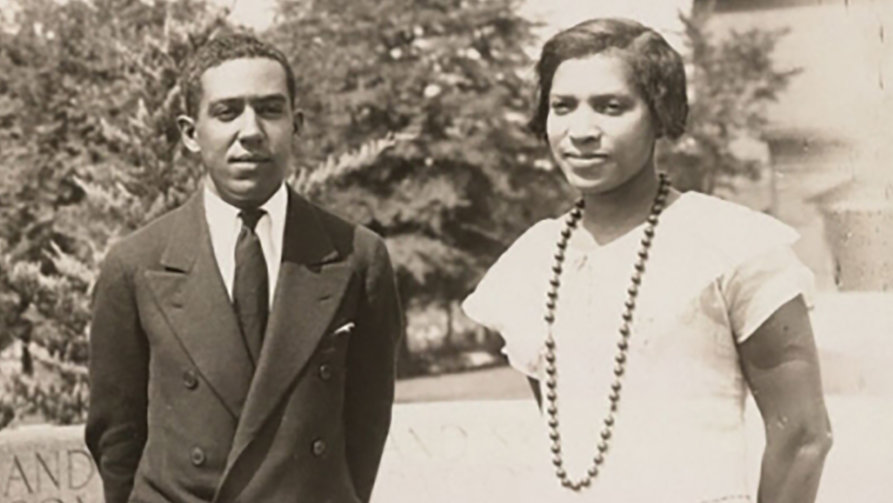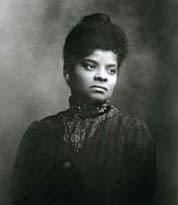
"Lynch Law," says the Virgina Lancet, "as known by that
appellation, had its origin in 1780 in a combination of citizens of
Pittsylvania County, Virginia, entered into for the purpose of suppressing
a trained band of horse-thieves and counterfeiters whose well concocted
schemes had bidden defiance to the ordinary laws of the land, and whose
success encouraged and emboldened them in their outrages upon the community.
Col. Wm. Lynch drafted the constitution for this combination of citizens,
and hence ‘Lynch Law’ has ever since been the name given to the summary
infliction of punishment by private and unauthorized citizens."
This law continues in force today in
some of the oldest states of the Union, where courts of justice have
long been established, whose laws are executed by white Americans. It
flourishes most largely in the states which foster the convict lease
system, and is brought to bear mainly, against the Negro. The first
fifteen years of his freedom he was murdered by masked mobs for trying
to vote. Public opinion having made lynching for that cause unpopular,
a new reason is given to justify the murders of the past 15 years. The
Negro was first charged with attempting to rule white people, and hundreds
were murdered on that pretended supposition. He is now charged with
assaulting or attempting to assault white women. This charge, as false
as it is foul, robs us of the sympathy of the world and is blasting
the race’s good name.
The men who make these charges encourage
or lead the mobs which do the lynching. They belong to the race which
holds Negro life cheap, which owns the telegraph wires, newspapers,
and all other communication with the outside world. They write the reports
which justify lynching by painting the Negro as black as possible, and
those reports are accepted by the press associations and the world without
question or investigation. The mob spirit had increased with alarming
frequency and violence. Over a thousand black men, women and children
have been thus sacrificed the past ten years. Masks have long since
been thrown aside and the lynchings of the present day take place in
broad daylight. The sheriffs, police, and state officials stand by and
see the work done well. The coroner’s jury is often formed among those
who took part in the lynching and a verdict, "Death at the hands
of parties unknown to the jury" is rendered. As the number of lynchings
have increased, so has the cruelty and barbarism of the lynchers. Three
human beings was burned alive in civilized America during the first
six months of this year (1893). Over one hundred have been lynched in
this half year. They were hanged, then cut, shot and burned.
The following table published by the
Chicago Tribune January, 1892, is submitted for thoughtful consideration.
1882 | 52 | Negroes | murdered | by | mobs |
1883 | 53 | " | " | " | " |
1884 | 39 | " | " | " | " |
1885 | 77 | " | " | " | " |
1886 | 73 | " | " | " | " |
1887 | 70 | " | " | " | " |
1888 | 72 | " | " | " | " |
1889 | 95 | " | " | " | " |
1890 | 100 | " | " | " | " |
1891 | 169 | " | " | " | " |
Of this number
269 | were | charged | with | rape. |
253 | " | " | " | murder. |
44 | " | " | " | robbery |
37 | " | " | " | incendiarism |
4 | " | " | " | burglary. |
27 | " | " | " | race prejudice. |
13 | " | " | " | quarreling with white men |
10 | " | " | " | making threats |
7 | " | " | " | rioting. |
5 | " | " | " | miscegenation |
32 | no | reason | given |
This table shows (I) that only one-third of nearly a thousand murdered
black persons have been even charged with the crime of outrage. This
crime is only so punished when white women accuse black men, which accusation
is never proven. The same crime committed by Negroes against Negroes,
or by white men against black women is ignored even in the law courts.
(2) That nearly as many were lynched
for murder as for the above crime, which the world believes is the cause
of all the lynchings. The world affects to believe that
white womanhood and childhood, surrounded by their lawful protectors,
are not safe in the neighborhood of the black man who protected and
cared for them during the four years of civil war. The husbands, fathers
and brothers of those white women were away for four years, fighting
to keep the Negro in slavery, yet not one case of assault has ever been
reported!
(3) That "robbery, incendiarism,
race prejudice, quarreling with white men, making threats, rioting,
miscegenation (marrying a white person), and burglary," are capital
offences punishable by death when committed by a black against a white
person. Nearly as many blacks were lynched for these charges (and unproven)
as for the crime of rape.
(4) That for nearly fifty of these lynchings
no reason is given. There is no demand for reasons, or need of concealment
for what no one is held responsible. The simple word of any white person
against a Negro is sufficient to get a crowd of white men to lynch a
Negro. Investigation as to the guilt or innocence of the accused is
never made. Under these conditions, white men have only to blacken their
faces, commit crimes against the peace of the community, accuse some
Negro, nor rest till he is killed by a mob. Will Lewis, an 18 year old
Negro youth was lynched at Tullahoma, Tennessee, August, 1891, for being
"drunk and saucy to white folks."
The women of the race have not escaped
the fury of the mob. In Jackson, Tennessee, in the summer of 1886, a
white woman died of poisoning. Her black cook was suspected, and as
a box of rat poison was found in her room, she was hurried away to jail.
When the mob had worked itself to the lynching pitch, she was dragged
out of jail, every stitch of clothing torn from her body, and she was
hung in the public court-house square in sight of everybody. Jackson
is one of the oldest towns in the State, and the State Supreme Court
holds its sittings there; but no one was arrested for the deed–not
even a protest was uttered. The husband of the poisoned woman has since
died a raving mainiac, and his ravings showed that he, and not the poor
black cook, was the poisoner of his wife. A fifteen year old Negro girl
was hanged in Rayville, Louisiana, in the spring of 1892, on the same
charge of poisoning white persons. There was no more proof or investigation
of this case than the one in Jackson. A Negro woman, Lou Stevens, was
hanged from a railway bridge in Hollendale, Mississippi, in 1892. She
was charged with being accessory to the murder of her white paramour,
who had shamefully abused her.
In 1892 there were 241 persons lynched.
The entire number is divided among the following states.
Alabama | 22 | Montana | 4 |
Arkansas | 25 | New York | 1 |
California | 3 | North Carolina | 5 |
Florida | 11 | North Dakota | 1 |
Georgia | 17 | Ohio | 3 |
Idaho | 8 | South Carolina | 5 |
Illinois | 1 | Tennessee | 28 |
Kansas | 3 | Texas | 15 |
Kentucky | 9 | Virginia | 7 |
Louisiana | 29 | West Virginia | 5 |
Maryland | 1 | Wyoming | 9 |
Mississippi | 16 | Arizona Ter. | 3 |
Missouri | 6 | Oklahoma | 3 |
Of this number 160 were of Negro descent. Four of them were lynched
in New York, Ohio and Kansas; the remainder were murdered in the south.
Five of this number were females. The charges for which they were lynched
cover a wide range. They are as follows:
Rape | 46 | Attempted Rape | 11 |
Murder | 58 | Suspected Robbery | 4 |
Rioting | 3 | Larceny | 1 |
Race Prejudice | 6 | Self-defense | 1 |
No cause given | 4 | Insulting women | 2 |
Incendiarism | 6 | Desperadoes | 6 |
Robbery | 6 | Fraud | 1 |
Assault and Battery | 1 | Attempted murder | 2 |
No offense stated, boy and girl. – 2
In the case of the boy and girl above
referred to, their father, named Hastings, was accused of the murder
of a white man; his fourteen year old daughter and sixteen year old
son were hanged and their bodies filled with bullets, then the father
was also lynched. This was in November, 1892, at Jonesville, Louisiana.
A lynching equally as cold-blooded took
place in Memphis, Tennessee, March, 1892. Three young colored men in
an altercation at their place of business, fired on white men in self-defense.
They were imprisoned for three days, then taken out by the mob and horribly
shot to death. Thomas Moss, Will Stewart and Calvin McDowell, were energetic
business men who had built up a flourishing grocery business. Their
business had prospered and that of a rival white grocer named Barrett
had declined. Barrett led the attack on their grocery which resulted
in the wounding of three white men, For this cause were three innocent
men barbarously lynched, and their families left without protectors.
Memphis is one of the leading cities of Tennessee, a town of seventy-five
thousand inhabitants! No effort whatever was made to punish the murderers
of these three men. It counted for nothing that the victims of this
outrage were three of the best known young men of a population of thirty
thousand colored people of Memphis. They were the officers of the company
which conducted the grocery. Moss being the President, Stewart the Secretary
of the Company and McDowell the Manager. Moss was in the Civil Service
of the United States as letter carrier, and all three were men of splendid
reputation for honesty, integrity and sobriety. But their murderers,
though well known, have never been indicted, were not even troubled
with a preliminary examination.
With law held in such contempt, it is
not a matter of surprise that the same city–one of the so-called queen
cities of the South, should again give itself over to a display of almost
indescribable barbarism. This time the mob made no attempt to conceal
its identity, but reveled in the contemplation of its feast of crime.
Lee Walker, a colored man was the victim. Two white women complained
that while driving to town, a colored man jumped from a place of concealment
and dragged one of the two women from the wagon, but their screams frightened
him away. Alarm was given that a Negro had made an attempted assault
upon the women and bands of men set out to run him down. They shot a
colored man who refused to stop when called. It was fully ten days before
Walker was caught. He admitted that he did attack the women, but that
he made no attempt to assault them; that he offered them no indecency
whatever, of which as a matter of fact, they never accused him. He said
he was hungry and he was determined to have something to eat, but after
throwing one of the women out of the wagon, became frightened and ran
away. He was duly arrested and taken to the Memphis jail. The fact that
he was in prison and could be promptly tried and punished did not prevent
the good citizens of Memphis from taking the law in their own hands,
and Walker was lynched.
The
Memphis Commercial of Sunday, July 23, contains a full account
of this tragedy from which the following extracts are made.
At 12 o’clock last night, Lee Walker,
who attempted to outrage Miss Mollie McCadden, last Tuesday morning,
was taken from the county jail and hanged to a telegraph pole just north
out of the prison. All day rumors were afloat that with nightfall an
attack would be made upon the jail, and as everyone anticipated that
a vigorous resistance would be made, a conflict between the mob ad the
authorities was feared.
At 10 o’clock Capt. O’Haver, Sergt.
Horan and several patrol men were on hand, but they could do nothing
with the crowd. An attack by the mob was made on the door in the south
wall and it yielded. Sheriff Mc Lendon and several of his men threw
themselves into the breach, but two or three of the storming shoved
by. They were seized by the police but were not subdued, the officers
refraining from using their clubs. The entire mob might at first hhave
been dispersed by ten policemen who would use their clubs, but the sheriff
insisted that no violence be done.
The mob got an iron rail and used it
as a battering ram against the lobby doors. Sheriff Mc Lendon tried
to stop them, and some one of the mob knocked him down with a chair.
Still he counseled moderation and would not order his deputies and the
police to dis perse the crowd by force. The pacific policy of the sheriff
impressed the mob with the idea that the officers were afraid, or at
least would do them no harm, and they redoubled their efforts, urged
on by a big switchman. At 12 o’clock the door of the prison was broken
in with a rail.
As soon as the rapist was brought out
of the door, calls were heard for a rope; then some one shouted "Burn
him!" But there was no time to make a fire. When Walker got into
the lobby a dozen of the men began beaten [sic] and stabbing him. He
was half dragged, half carried to the corner of Front street and the
alley between Sycamore and Mill, and hung to a telephone pole.
Walker made a desperate resistance.
Two men entered his cell first and ordered him to come forth. He refused
and they failing to drag him out, others entered. He scratched and bit
his assailants, wounding several of them severely with his teeth. The
mob retaliated by striking and cutting him with fists and knives. When
he reached the steps leading down to the door he made another stand
and was stabbed again and again. By the time he reached the lobby his
power to resist was gone, and he was shoved along through the mob of
yelling, cursing men and boys, who beat, spat upon and slashed the wretch-like
demon. One of the leaders of the mob fell, and the crowd walked ruthlessly
over him. He was badly hurt–a jawbone fractured and internal injuries
inflicted. After the lynching friends took charge of him.
The mob proceeded north on Front street
with the victim, stopping at Sycamore street to get a rope from a grocery.
"Take him to the iron bridge on Main street," yelled several
men. The men who had hold of the Negro were in a hurry to finish the
job, however, and when they reached the telephone pole at the corner
of Front street and the first alley north of Sycamore they stopped.
A hastily improvised noose was slipped over the Negro’s head and several
young men mounted a pile of lumber near the pole and threw the rope
over one of the iron stepping pins. The Negro was lifted up until his
feet were three feet above the ground, the rope was made taut, and a
corpse dangled in midair. A big fellow who helped lead the mob pulled
the Negro’s legs until his neck cracked. The wretch’s clothes had been
torn off and, as he swung, the man who pulled his legs mutilated the
corpse.
One or two knife cuts, more or less,
made little difference in the appearance of the dead rapist, however,
for before the rope was around his neck his skin was cut almost to ribbons.
One pistol shot was fired while the corpse was hanging. A dozen voices
protested against the use of firearms, and there was no more shooting.
The body was permitted to hang for half an hour, then it was cut down
and the rope divided among those who lingered around the scene of the
tragedy. Then it was suggested that the corpse be burned, and it was
done. The entire performance, from the assault on the jail to the burning
of the dead Negro was witnessed by a score or so of policemen and as
many deputy sheriffs, but not a hand was lifted to stop the proceedings
after the jail door yielded.
As the body hung to the telephone pole,
blood streaming down from the knife wounds in his neck, his hips and
lower part of his legs also slashed with knives, the crowd hurled expletives
at him, swung the body so that it was dashed against the pole, and,
so far from the ghastly sight proving trying to the nerves, the crowd
looked on with complaisance, if not with real pleasure. The Negro died
hard. The neck was not broken, as the body was drawn up without being
given a fall, and death came by strangulation. For fully ten minutes
after he was strung up the chest heaved occasionally and there was convulsive
movements of the limbs. Finally he was pronounced dead, and a few minutes
later Detective Richardson climbed on a pile of staves and cut the rope.
The body fell in a ghastly heap, and the crowd laughed at the sound
and crowded around the protrate body, a few kicking the inanimate carcass.
Detective Richardson, who is also a
deputy coroner, then proceeded to impanel the following jury of inquest
J. S. Moody, A. C. Waldran, B. J. Childs, J. N. House, Nelson Bills,
T. L. Smith, and A. Newhouse. After viewing the body the inquest was
adjourned without any testimony being taken until 9 o’clock this morning.
Te jury will meet at the coroner’s house, 51 Beale street, upstairs,
and decide on a verdict. If no witnesses are forthcoming, the jury will
be able to arrive at a verdict just the same, as all members of it saw
the lynching. Then some one raised the cry of, "Burn him!"
It was quickly taken up and soon resounded from a hundred throats. Detective
Richardson for a long time, single handed, stood the crowd off. He talked
and begged the men not to bring disgrace on the city by burning the
body, arguing that all the vengeance possible had been wrought.
While this was going on a small crowd
was busy starting a fire in middle of the street. The material was handy.
Some bundles of staves were taken from the adjoining lumber yard for
kindling. Heavier wood was obtained from the same source, and coal oil
from a neighboring grocery. Then the cries of "Burn him! Burn him!"
were redoubled.
Half a dozen men seized the naked body.
The crowd cheered. They marched to the fire, and giving the body a swing,
it was landed in the middle of the fire. There was a cry for more wood,
as the fire had begun to die owing to the long delay. Willing hands
procured the wood, and it was piled up on the Negro, almost, for a time,
obscuring him from view. The head was in plain view, as also were the
limbs, and one arm which stood out high above the body, the elbow crooked,
held in that position by a stick of wood. In a few moments the hands
began to swell, then came great blisters over all the exposed parts
of the body; then in places the flesh was burned away and the bones
began to show through. It was a horrible sight, one which perhaps none
there had ever witnessed before. It proved too much for a large part
of the crowd and the majority of the mob left very shortly after the
burning began.
But a large number stayed, and were
not a bit set back by the sight of a human body being burned to ashes.
Two or three white women, accompanied by their escorts, pushed to the
front to obtain an unobstructed view, and looked on with astonishing
coolness and nonchalance. One man and woman brought a little girl, not
over 12 years old, apparently their daughter, to view a scene which
was calculated to drive sleep from the child’s eyes for many nights,
if not to produce a permanent injury to her nervous system. The comments
of the crowd were varied. Some remarked on the efficiency of this style
of cure for rapists, others rejoiced that men’s wives and daughters
were now safe from this wretch. Some laughed as the flesh cracked and
blistered, and while a large number pronounced the burning of a dead
body as an useless episode, not in all that throng was a word of sympathy
heard for the wretch himself.
The rope that was used to hang the Negro,
and also that which was used to lead him from the jail, were eagerly
sought by relic hunters. They almost fought for a chance to cut off
a piece of rope, and in an incredibly short time both ropes had disappeared
and were scattered in the pockets of the crowd in sections of an inch
to six inches long. Others of the relic hunters remained until the ashes
cooled to obtain such ghastly relics as the teeth, nails and bits of
charred skin of the immolated victim of his own lust. After burning
the body the mob tied a rope around the charred trunk and dragged it
down Main street to the court house, where it was hanged to a center
pole. The rope broke and the corpse dropped with a thud, but it was
again hoisted, the charred legs barely touching the ground. The teeth
were knocked out and the finger nails cut off as souvenirs. The crowd
made so much noise that the police interfered. Undertaker Walsh was
telephoned for, who took charge of the body and carried it to his establishment,
where it will be prepared for burial in the potter’s field today.
A prelude to this exhibition of 19th century barbarism was the following
telegram received by the Chicago Inter-Ocean, at 2 o’clock, Saturday
afternoon-ten hours before the lynching: "MEMPHIS, TENN, July
22, To Inter-Ocean, Chicago. Lee Walker, colored man, accused
of raping white women, in jail here, will be taken out and burned by
whites tonight. Can you send Miss Ida Wells to write it up? Answer.
R.M. Martin, with Public Ledger" The
Public Ledger is one of the oldest evening daily papers in Memphis,
and this telegram shows that the intentions of the mob were well known
long before they were executed. The personnel of the mob is given by
the Memphis Apear-Avalanche. It says, "At first it seemed
as if a crowd of roughs were the principals, but as it increased in
size, men in all walks of life figured as leaders, although the majority
were young men."
This was the punishment meted out to
a Negro, charged, not with rape, but attempted assault, and without
any proof as to his guilt, for the women were not given a chance to
identify him. It was only a little less horrible than the burning alive
of Henry Smith, at Paris, Texas, February Ist, 1893, or that of Edward
Coy, in Texarkana, Texas, February 20, 1892. Both were charged with
assault on white women, and both were tied to the stake and burned while
yet alive, in the presence of ten thousand persons. In the case of Coy,
the white woman in the case, applied the match, even while the victim
protested his innocence.
The cut which is here given is the exact
reproduction of the photograph taken at the scene of the lynching at
Clanton, Alabama, August, 1891. The cause for which the man was hanged
is given in the words of the mob which were writen of the back of the
photograph, and they are also given. This photograph was sent to Judge
A. W. Tourgee, of Mayville, N. Y.
In some of these cases the mob affects
to believe in the Negro’s guilt. The world is told that the white woman
in the case identifies him, or the prisoner "confesses." But
in the lynching which took place in Barnwell County, South Carolina,
April 24, 1893, the mob’s victim, John Peterson escaped and place himself
under Govenor Tillman’s protection; not only did he declare his innocence,
but offered to prove an alibi, by white witnesses. Before his witnesses
could be brought, the mob arrived at the Governor’s mansion and demanded
the prisoner. He was given up, and although the white woman in the case
said he was not the man, he was hanged 24 hours after, and over a thousand
bullets fired into his body, on the declaration that a "crime had
been committed and some one had to hang for it."
The lynching of C. J. Miller, at Bardwell,
Kentucky, July 7, 1893, was on the same principle. Two white girls were
found murdered near their home on the morning of July 5th: their bodies
were horribly mutilated. Although their father had been instrumental
in the prosecution and conviction of one of his white neighbors for
murder, that was not considered as a motive. A hue and cry was raised
that some Negro had committed rape and murder and a search was immediately
begun for a Negro. A bloodhound was put on the trail which he followed
to the river and into a boat of a fisherman named Gordon. This fisherman
said he had rowed a white man, or a very fair mulatto across the river
at six o’clock the evening before. The bloodhound was carried across
the river, took up the trail on the Missouri side, and ran about two
hundred yards to the cottage of a white farmer, and there lay down refusing
to go further.
Meanwhile a strange Negro had been arrested
in Sikestown, Missouri, and the authorities telegraphed that fact to
Bardwell, Kentucky. The sheriff, without requisition, escorted the prisoner
to the Kentucky side and turned him over to the authorities who accompanied
the mob. The prisoner was a man with dark brown skin; he said his name
was Miller and that he had never been in Kentucky. The fisherman who
had said the man he rowed over was white, when told by the sheriff that
he would be held responsible as knowing the guilty man, if he failed
to identify the prisoner, said Miller was the man. The mob wished to
burn him then, about ten o’clock in the morning, but Mr. Ray, the father
of the girls, with great difficulty urged them to wait till three o’clock
that afternoon. Confident of his innocence, Miller remained cool, while
hundreds of drunken, heavily armed men raged about him. He said: "My
name is C. J. Miller, I am from Springfield, Ill., my wife lives at
716 North Second Street. I am here among you today looked upon as one
of the most brutal men before the people. I stand here surrounded by
men who are excited; men who are not willing to let the law take its
course, and as far as the law is concerned, I have committed no crime,
and certainly no crime gross enough to deprive me of my life or liberty
to walk upon the green earth. I had some rings which I bought in Bismarck
of a Jew peddler. I paid him $4.50 for them. I left Springfield on the
first day of July and it came to Alton. From Alton I went to East St.
Louis, from there to Jefferson Barracks, thence to Poplar Bluff, thence
to Hoxie, to Jonesboro, and then on a local freight to Malden, from
there to Sikeston. On the 5th day of July, the day I was supposed to
have committed the offense, I was at Bismarck."
Failing in any way to connect Miller
with the crime, the mob decided to give him the benefit of the doubt
and hang, instead of burn him, as was first intended.
At 3 o’clock, the hour set for the execution, the mob rushed into the
jail, tore off Miller’s clothing and tied his shirt around his loins.
Some one said the rope was "a white man’s death," and a log-chain
nearly a hundred feet in length, weighing nearly a hundred pounds was
placed about his neck. He was led through the street in that condition
and hanged to a telegraph pole. After a photograph of him was taken
as he hung, his fingers and toes cut off, and his body otherwise horribly
mutilated, it was burned to ashes. This was done within twelve hours
after Miller was taken prisoner. Since his death, his assertions regarding
his movements have been proven true. But the mob refused the necessary
time for investigation.
No more appropriate close for this chapter
can be given than an editorial quotation from that most consistent and
outspoken journal the Inter-Ocean. Commenting on the many barbarous
lynchings of those months (June and July) in its issue of August 5th,
1893, it says:
"So long as it is known that there
is one charge against a man which calls for no investigation before
taking his life there will be mean men seeking revenge ready to make
that charge. Such a condition would soon destroy all law. It would not
be tolerated for a day by white men. But the Negroes have been so patient
under all their trials that men who no longer feel that they can safely
shot a Negro for attempting to exercise his right as a citizen at the
polls are ready to trump up any other charge that will give them the
excuse for their crime. It is a singular coincidence that as public
sentiment has been hurled against political murders there has been a
corresponding increase in lynchings on the charge of attacking white
women. The lynchings are conducted in much the same way that they were
by the Ku Klux Klans when Negroes were mobbed for attempting to vote.
The one great difference is in the cause which the mob assigns for its
action.
The real need is for a public sentiment
in favor of enforcing the law and giving every man, white and black,
a fair hearing before the lawful tribunals. If the plan suggested by
the Charleston News and Courier will do this let it be done at once.
No one wants to shield a fiend guilty of these brutal attacks upon unprotected
women. But the Negro has as good a right to a fair trial as the white
man, and the South will not be free from these horrible crimes of mob
law so long as the better classes of citizens try to find excuse for
recognizing Judge Lynch."
***Ida B. Wells was an anti-lynching crusader a women’s rights activist a passionate crusader against racism a journalist and teacher who spoke out on
racial issues a civil rights pioneer and one of the founders of the NAACP.

